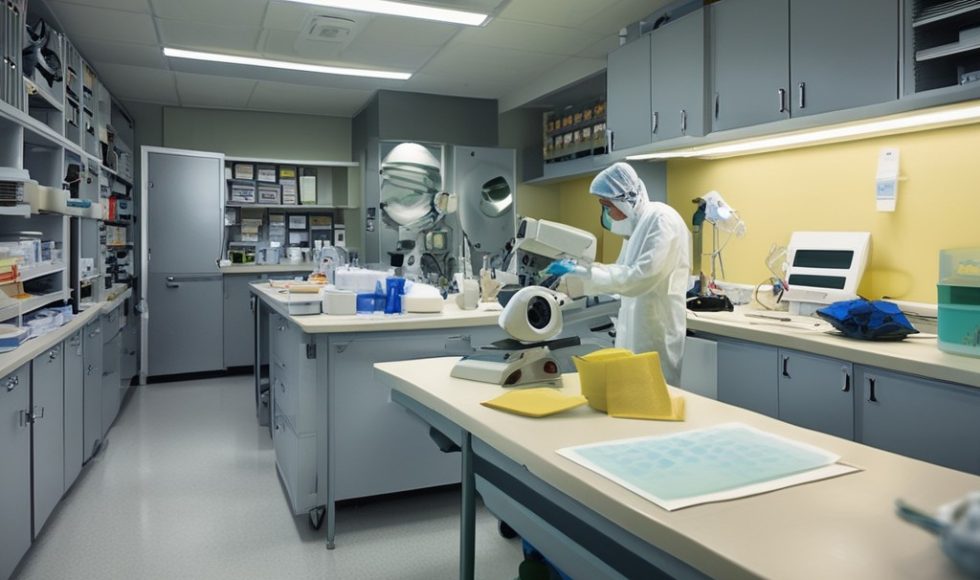Heather Stark, the Global Segment Manager at Oxford Nanopore Technologies, introduced the webinar “Enhancing Cell and Gene Therapy Success with Multi-Omic Sequencing: The Oxford Nanopore Advantage.” Start covers biopharma and explained how nanopore sequencing works. They explained that there are several end-to-end workflows for synthetic biology, including plasmid, AAV, amplicon, and mRNA IVT sequencing. Clark […]
Tonight, I started watching the Oxford Nanopore Technologies London Calling 2024 expert panel on “Building a rapid, targeted, and responsive infectious disease system.”Aaron Pomerantz, the Associate Director of Global Segment Marketing at ONT, helped facilitate the session. Dr. Ines Hassan from the Tony Blair Institute for Global Change started. Hassan helps encourage the development and […]
Tonight, I watched a session on single-cell and spatial transcriptomics methods. The Oxford Nanopore Technologies (ONT) introduction highlighted how adding more cells increases resolution, yet short-read approaches have limits. Emphasizing the tagline “What’s missing matters,” the speaker noted that isoform switching is important to identify. The ONT specialist explained several solutions compatible with ONT, including […]
Serge Monpoeho from Regeneron Pharmaceuticals in the US presented at the ONT Biopharma Day in Boston. The title of the session was “Adventitious agent screening by long-read NGS.” They wanted to develop an Oxford Nanopore-driven adventitious agent detection system. They used the Ligation Sequencing Kit, heat extraction, and custom universal PCR primers. They ran for […]
Individual cell analysis is possible with Oxford Nanopore Technologies (ONT). Matt Parker from ONT spoke about “Individual cells matter – single-cell data analysis with EPI2ME.” EPI2ME cloud was launched, and cloud-based analyses are possible. I have been testing and mentioning the new version in the Portable Genome Sequencing course. Bryan Leland, a Bioinformatics Manager with […]
Tonight, I watched Rhys White from the Institute of Environmental Science and Research in New Zealand present “Real-time genomic surveillance with nanopore sequencing.” They have started a collaboration with the Wellington Regional Hospital. The goal was to make Nanopore sequencing accessible to the clinical lab. The team used a MinION device to sequence blood and […]
Sneha Geonka from Stanford University & Princeton presented on “Computational paradigm for scalable ultra-fast, & cost-efficient nanopore sequencing.” Goenka shared a graph showing the turnaround time for sequencing in the clinic. The world record is 7.3 hours at Stanford! To shorten the time to diagnosis, the pipeline included distributed computing and a lot of GPUs: […]
Tonight, I watched the London Calling 2024 session by Kathleen Zeglinski from the Walter and Eliza Hall Institute of Medical Research in Australia. The session title was “Quality Control of Gene Therapy Vectors using Nanopore Direct RNA Sequencing.” Zeglinski explained that lentiviruses are a type of RNA viruses that can integrate into the genome. Lentiviruses […]
Basecaller updates are more frequent now, with new models and speed improvements. Tonight, I watched the London Calling 2024 session on basecaller advancements. Sam Davis, Principal Scientist, Machine Learning with Oxford Nanopore Technologies (ONT), spoke about the recently released models and chemistries. The V5 models offer 1.5Q accuracy improvement when compared to previous versions. Davis […]
Tonight, I watched the London Calling 2024 EPI2ME Product Demo. The session title is: “EPI2ME: democratising bioinformatics – from point-and-click analysis to custom integrations.” Sarah Griffiths, ONT Bioinformatics Workflow Developer, gave an overview of the EPI2ME workflows. The workflows use Nexflow and containers. At the time of recording, they had seventeen workflows. Griffiths noted that […]









